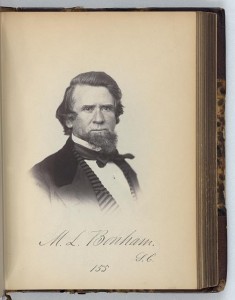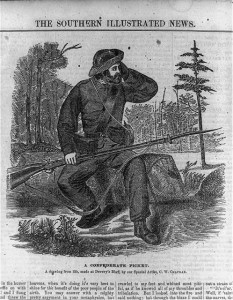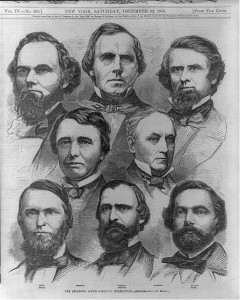Rebel = Traitor = Death by Hanging
I first became aware of D. Augustus Rickert and his book in A Rising Thunder by Joseph Wheeler. Rickert describes his work as a 16 year old volunteer with blistered and bloodied hands as he helped build embrasures for the South Carolina forts opposed to Fort Sumter in Charleston harbor. After traveling north by train with his unit (to the enthusiastic show of support by Confederate citizens along the way) Dickert and company joined up with Bonham’s brigade (under P.G.T. Beauregard’s overall command). By June1861 they were somewhere between Fairfax courthouse and Bull Run. Rickert was still 16 at the time. Here he describes his first picket duty.
From History of Kershaw’s Brigade by
D. Augustus Dickert:
The duties of picketing were the first features of our army life that
looked really like war. The soldiers had become accustomed to guard
duty, but to be placed out on picket or vidette posts alone, or in
company with a comrade, to stand all day and during the dead hours of
the night, expecting some lurking foe every moment to shoot you in
the back, or from behind some bush to shoot your head off, was quite
another matter. As a guard, we watched over our friends; as a picket,
we watched for our foe. For a long time, being no nearer the enemy
than the hearing of their drums, the soldiers had grown somewhat
careless. But there was an uncanny feeling in standing alone in the
still hours of the night, in a strange country, watching, waiting
for an enemy to crawl up and shoot you unawares. … Up to this
time there had been no prisoners captured on either side, and it was
uncertain as to what would be the fate of any who would fall in the
enemy’s hands. As we were considered traitors and rebels, the penalty
for that crime was, as we all knew, death. The Northern press had kept
up quite a howl, picturing the long rows of traitors that would be
hung side by side as soon as they had captured the Confederate Army.
That there was a good deal of “squeamishness” felt at the idea of
being captured, cannot be doubted. So videttes were stationed several
hundred yards down the road with a picket post of four men, between
the outside sentinels and the company, as reserve.
From what I understand hanging might have been preferable to life (and quite possibly death) in a Civil War prison camp.
Milledge Luke Bonham fought in the Mexican-American war. He served in the U.S. House of Representatives from 1857 until December 21, 1860 – the day after South Carolina seceded. He gave up being a general in 1862 so he could serve in the Confederate Congress.



